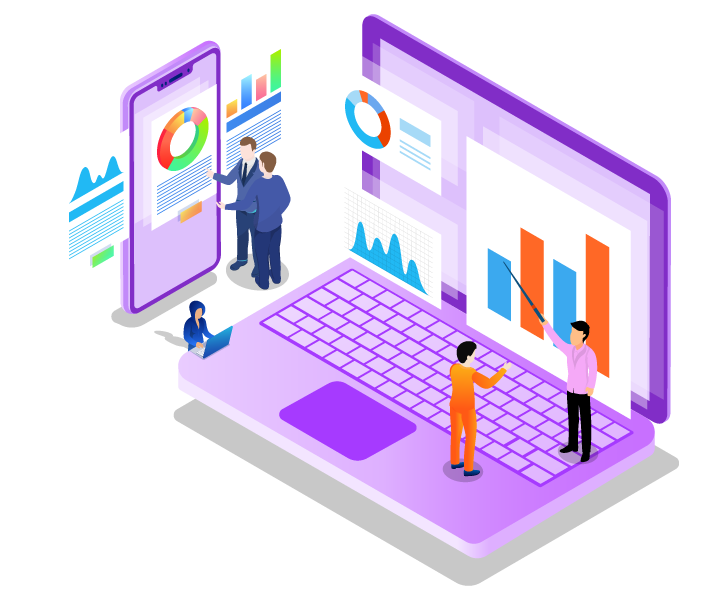The way we manage and manage devices in our modern workplace has changed dramatically. As the world shifts to hybrid and remote working arrangements, the old method of dispersing laptops in the workplace has now been replaced with an operationally more complex process known as Device Lifecycle Management (DLM). Managed Desktop Service is a essential element in this transformation. It assists organizations in streamlining processes, enhance end-user experiences which ultimately leads to an increase in productivity.
Device Lifecycle Management is often known as DLM and encompasses the entire process that a device goes through from purchase to retirement. This includes a variety of processes, including procurement in addition to provisioning maintenance and removal at the end the lifespan. DLM was once an easy process conducted in a conventional office setting. However, remote work has brought new layers of complexity.

In this new landscape, IT managers find themselves struggling with logistics and asset management throughout the device’s life cycle. This is due to the need to accommodate the diverse needs of remote and hybrid workforces. As a result, it has become essential for businesses to use efficient solutions, and Managed Desktop Service has emerged as a game changer.
Managed Desktop Service: A Remote Work Enabler
Managed Desktop Services, also known as MDS is a comprehensive management solution that simplifies the management of devices for end users. This service provides a holistic approach for provisioning, maintaining and supporting devices, making it a valuable instrument for IT managers. Here’s how Managed Desktop Service is helping organizations navigate the challenges of remote work:
Managed Desktop Service aims to improve the user experience for end users. It is designed to address common problems faced by remote workers, such as delayed equipment onboarding, long software updates and the slow repair and replacement process. MDS improves job satisfaction and productivity by making sure employees have access to the tools and resources they require at any time required.
Managed Desktop Service streamlines device provisioning for remote workers. MDS can help organizations supply laptops as well as the equipment needed for newly hired employees. This will ensure that new hires have the tools required from the very first day. This can eliminate the frustration of employees waiting to receive their devices and experiencing delays in starting their work.
Efficient Software Updates: Managed Desktop Service helps IT teams manage patches and software updates more effectively. You can schedule updates in uninterrupted times, which makes sure that employees will not be interrupted while working on important tasks. This eliminates the possibility of employees facing interruptions during crucial meetings or video calls.
Rapid Repairs and Replacements: In remote working environments, it is important to replace or repair malfunctioning devices as quickly as you can. Managed Desktop Service providers have often implemented robust support systems to ensure employees receive prompt assistance when their devices encounter problems. This helps reduce downtime as well as the risk that cybersecurity threats will arise from using personal or unsecured mobile devices during emergencies.
Cost-Efficiency: Businesses can cut costs by outsourcing the management device for the end-user to Managed Desktop Services providers. This approach eliminates the need for in-house staff to handle task management for devices, lowers the risk of costly interruptions due to obsolete equipment, and improves the overall cost-effectiveness of managing the lifecycle of a device.
The Effects on Employee Engagement and Turnover
The efficiency and effectiveness of the entire lifecycle process has a direct impact on employee engagement. Employees who are unhappy with difficulties with their device could become disengaged or seek out alternative possibilities. The impact of an inefficient DLM on engagement of employees can be quite significant.
Companies that invest in Managed Desktop Service, and a Device Lifecycle Management Strategy can make for a more enjoyable and pleasant work environment. Employees with access to the appropriate tools, experience fewer disruptions, and get prompt assistance when problems arise are more likely to stay with their employer of choice. This could reduce turnover as well as the recruitment and training costs that come with it.
Mitigating Cybersecurity Risks
Organizations are putting cybersecurity at the top of their priority lists in this day and period of remote work. Employees could use personal devices or unprotected devices that do not have proper device management. This poses very dangerous to the data and network security of the company.
Managed Desktop Service providers typically have robust cybersecurity protocols in the works. They can ensure that all devices are equipped with the latest security patches installed and that data is secured and encrypted. This proactive approach helps companies minimize risks and keep secure remote working environments.
The end of the article is:
The importance of Managed Desktop Service and Device Lifecycle Management cannot be overstated in the context of workplace environments continuing it’s evolution. These are services that have become crucial for businesses that are trying to adapt to the changing requirements of hybrid and remote work. By focusing on improving the end-user experience, streamlining the provisioning of devices and improving cybersecurity, organizations can boost productivity, decrease turnover, and create a safe and enjoyable work environment in this new era of work. This is not a response to the current times. It’s actually an important strategic move towards a more competitive future.
